Gardner, до 1950
‘Edward J. Gardner’, S. vulgaris
Gardner pre 1950; D V
syn. – ‘Ed J. Gardner’, ‘Edward Gardner’, ‘Edward J. Gardener’, ‘Edw. J. Gardner’, Gardner No. 443, ‘Flamingo’
marketed in Germany as FLAMINGO™ (No. 305349856; G. & J. Roßkamp)
Edw. J. Gardner Nursery, Price list, 3 [1950]; Gardner, US Plant Patent No. 1086 [Apr. 22, 1952]; Wister, Lilacs for America, 28 [1953]; Lilacs – Quart. Jour. 20(4): front cover ill. [1991] & 22(4): back cover ill. [1993]; Photo on Jorgovani/Lilacs 2015 DVD.
Named for Edward J. Gardner, 1891-1952, nurseryman, Horicon, Wisconsin, USA.
cultivar name presumed registered 1953; name established and accepted.
Международный регистр названий культиваров рода Syringa L.
The original bush, from which I have reproduced other bushes asexually at Horicon, Wisconsin by rooting cuttings, and by grafting on vulgaris and other root stock, was a seedling of unknown ancestry. It was one of a large number of lilac plants raised from mixed seed of uncontrolled pollination which I collected from choice varieties in my nursery.
The habit of growth of the bush is extremely vigorous but not particularly distinctive, being similar to that of other lilacs. The foliage, however, is very slightly different from the foliage of lilac vulgaris or the varieties thereof commonly known as French hybrid lilacs. The terminal leaves on each stem have a distinct olive brownish cast, particularly in the veins, but this disappears and the leaves become uniformly green (Maerz and Paul, Dictionary of Color Plate 23-L-3) as they become older. The color and shape of the leaves and the shape of the florets and the form of the bloom clusters all suggest that one of the ancestors may have been a lilac hyacinthiflora. However, this possible parent is an early bloomer, whereas my improved lilac blooms with vulgaris and French hybrid lilacs, about mid-season.
The bloom panicles are large and loosely branching. The general color effect of the open flower is a uniform pale pink. The buds, however, have quite a deep mauve shade, that gradually lightens and disappears as the flower opens fully.
Individual florets resemble a hyacinch floret in form. They average about 7/8 inches across and are double. The calyx is minute as compared with the long, gamopetalons corolla, within which one and inner corolla is substantially the same length as the outer and does not protrude therefrom, so that only one corolla is visible and the several layers of petals all appear to originate at nearly the same level. The petals of the top row, usually four in number, and spaced substantially uniformly at about 90o, are of different form from the others, being narrow and deeply channeled. There is sometimes a fifth narrow petal lying directly behind one of the others. Subdividing the angles between the petals of the top row are four broader petals, not appreciably channeled. Frequently there is a third row of petals corresponding in angular position with the narrow petals of the first row but broad and unchanneled, like those of the intermediate row. Only the petals of the lower row, whether it be the second or third row, spring from an external, visible corolla, and these lower petals are pronouncedly recurvant. The color of all petals, and the corolla is most nearly identified in Maerz and Paul Dictionary by Color Plate 1-E to F-(7). The fragrance is delicate but typical of lilacs.
Whereas most lilac blooms wither very shortly upon being picked and placed in water, the blooms of my improved lilac last unusually well and, when taken before aging on the bush, have maintained their color and form in water for several days without withering.
Having thus described some of the outstanding identifying characteristics of the lilac of my invention, I claim:
The new and distinct variety of lilac plant as described and illustrated and characterized by its loose panicles of distinctive pale pink blooms, individual florets being double and having channeled narrow top petals and broad recurvant lower petals springing from immediately proximate levels.
EDWARD J. GARDNER. Авторское описание для Патентной службы США
D V Edward J. Gardner
Эдвэд Джей Гарднер, Gardner до 1950
Бутоны густо-розовые.Цветки лиловато-розовые, крупные, махровые, душистые; лепестки удлиненно-заостренные, слегка изогнутые. Соцветия многовершинные, средней плотности. Листья темно-зеленые. Кусты среднерослые, широкие.
«СИРЕНЬ. Коллекция ГБС РАН» И.Б. Окунева, Н.Л. Михайлов, А.С. Демидов, Москва, Наука, 2008

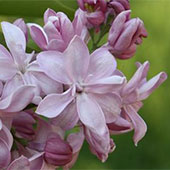
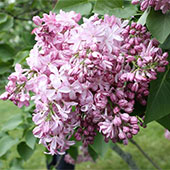
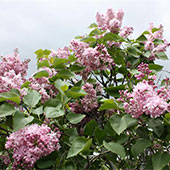
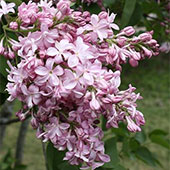
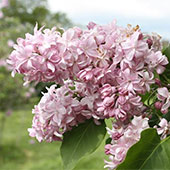
Оставить комментарий
Пожалуйста, зарегистрируйтесь, чтобы иметь возможность оставлять комментарии.